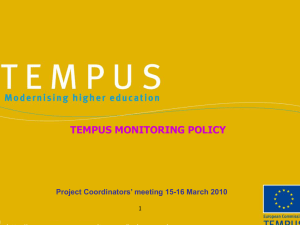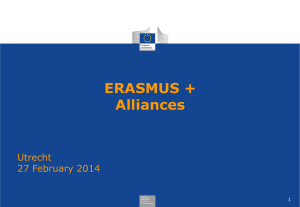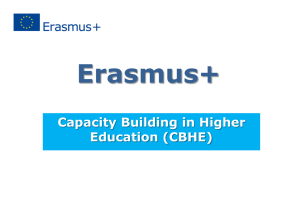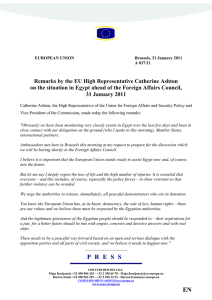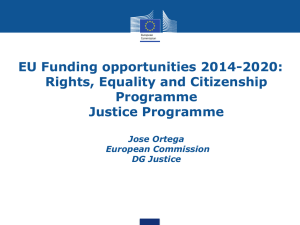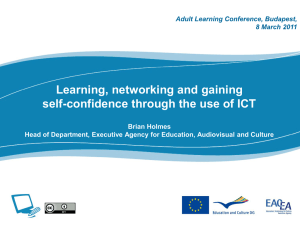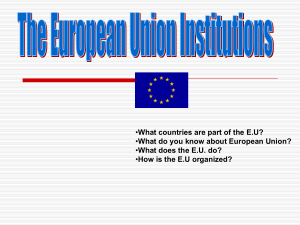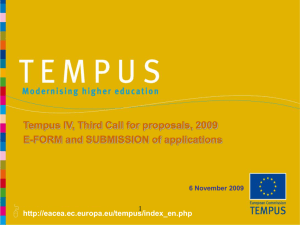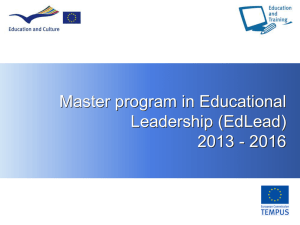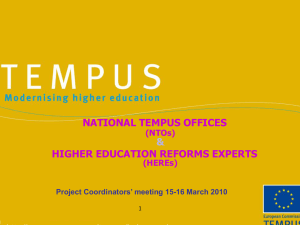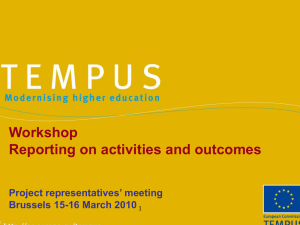Operational and financial aspects part 1 - EACEA
advertisement
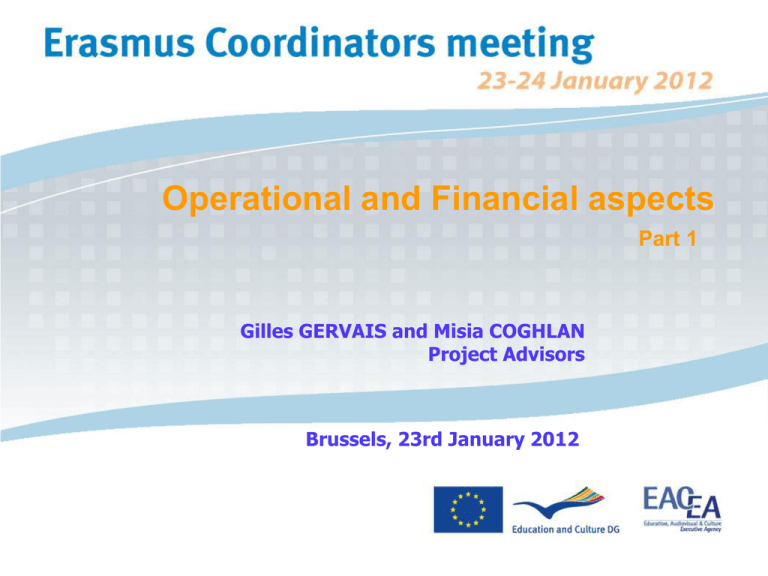
Operational and Financial aspects Part 1 Gilles GERVAIS and Misia COGHLAN Project Advisors Brussels, 23rd January 2012 Presentation Overview •Legal documents, actors and useful links •Monitoring of projects by the Agency Types of Grant Agreement • A multibeneficiary agreement grant • A mono-beneficiary agreement grant EACEA Cobeneficiaries EACEA Coordinator Letter of mandate Cobeneficiaries Cobeneficiaries Beneficiary Cobeneficiaries 3 Mono/Multi-beneficiary grant agreements • The type of Grant Agreement used vary depending on the nature of the consortium. • Two models are used: a multibeneficiary grant agreement for all consortia except Erasmus Networks and unilateral projects, which use a mono-beneficiary grant agreement as in previous years. • In the framework of the multibeneficiary grant Agreement, what was formerly known as the "beneficiary" ("applicant" in the application form) is now the "co-ordinator" and what was formerly known as the "partners" are now the "cobeneficiaries". The grant agreement (1) Please read carefully the grant agreement which contains the Special Conditions, the General Conditions and Annexes below: *http://eacea.ec.europa.eu/llp/beneficiaries/2010/reporting_lifelong_learning_2010_en.php The grant agreement (2) Please note that: The terms set out in the Special Conditions shall take precedence over those in the other parts of the agreement. The terms of the General Conditions shall take precedence over those in the Annexes. The grant agreement (3) The Special Conditions contain key information as: Period of eligibility of costs Eligible budget and maximum grant (in EUR and %) Payment arrangements (40%-40%-20% or 70%-30%) Reporting obligations (progress report or not) Bank details and contact details Exchange rate applicable for conversion into EUR Actors Project LLP National Agencies EACEA (The Agency) European Commission DG EAC Project beneficiary (called coordinator in the multibeneficiary agreement) • Legal representative signs all legal documents (grant agreement, amendment requests, reports, etc.); • Is accountable for financial management (even if different from the coordinating organisation); • Signs contracts / partnership agreements with partner organisations Project daily coordinator • Indicated in Article I.7.3/I.8.3 of the grant agreement; • Manage daily communication from and to the Agency; • Responsible for the implementation of the project; • Manages partners work and is responsible for solving partnership problems; • Monitors the budget, controls the costs and the justifying documents. Project members • Partner organisations* (called co-beneficiaries in the multi-beneficiary agreement): – Share part of the budget: • Receive part of the Community Contribution • Contribute to the co-financing – Are co-responsible for the implementation of the project – Report to the co-ordinator and transmit all justifying costs *Including third country participants (with budgetary restrictions) Project participants Sub-contractor: Organisation/person from outside the partnership performing specific task for which no competence exists among the partnership. Project management and the general administration of the project may not be sub-contracted. Associated partners: Organisations participating in project activities, but not sharing part of the budget. Cannot be subcontracted. EACEA: Actors Responsible for the legal and financial compliance of the project General management of action/priorities Calls, selection, contracts, monitoring.... Project advisor: Performs continuous monitoring of the project and acts as helpdesk during the project lifetime; Validates expert assessments of progress and final reports. Financial officer: Assesses the financial part of Progress and Final reports; acts as helpdesk concerning financial matters. European Commission – DG EAC • Policy and programme definition • Dissemination and exploitation of project results •Impact analysis LLP National Agencies • Manage the full project life-cycle of the de-centralised actions; • Organise thematic meetings and dissemination conferences at national level. Monitoring strategy Monitoring activities Online support documents Project management information published on the website (contractual documents, handbook, guidelines) Helpdesk Dialogue, telephone, letters, e-mails Reporting Evaluation of progress and final reports – feedback (content & finance) Meetings Kick off meeting including workshops Visits to projects Thematic cluster meetings Attending key events organised by the projects ● Follow-up Good practices in project management, dissemination Useful links: http://eacea.ec.europa.eu/llp/beneficiaries/2011/index_en.php Useful links: http://eacea.ec.europa.eu/llp/index_en.php Useful links: http://eacea.ec.europa.eu/llp/results_projects/pr oject_compendia_en.php Useful links Useful links: http://eacea.ec.europa.eu/llp/erasmus/documents/guideline s_for_llp_coordinators_project_start_up.pdf Useful links Useful links Monitoring Strategy Examples of findings (1) Expert’s recommendations at selection stage followed Balanced work plan Active participation, clear management structure and division of tasks Project coordinators supported at institutional level for all aspects of project implementation Good internal/external communication (strategy, tools..) Web page as a dynamic tool for dissemination and promotion Highly engaged target groups and stakeholders Monitoring Strategy Examples of findings (2) Delays in work plan (e.g. partner withdrawal) Sleeping partners Large underspending Poor dissemination plan No compliance with publicity clause Weak implementation of dissemination strategy from the project start No internal quality control / evaluation mechanisms Underestimation of accreditation/recognition challenges (CD) CONTACTS María Luisa GARCIA MINGUEZ (coordination) EACEA-ERA-MULTILATERAL@ec.europa.eu Gilles GERVAIS, Natalia RIESGO, Alba PRIETO GONZALEZ, Misia COGHLAN, Mireia FABREGA-IGLESIAS, José MATOS MARTINS, Magalie SOENENS EACEA-ERA-NETWORKS@ec.europa.eu EACEA-ERA-ACCOMPANYING@ec.europa.eu Katia DE SOUSA Natalia RIESGO
